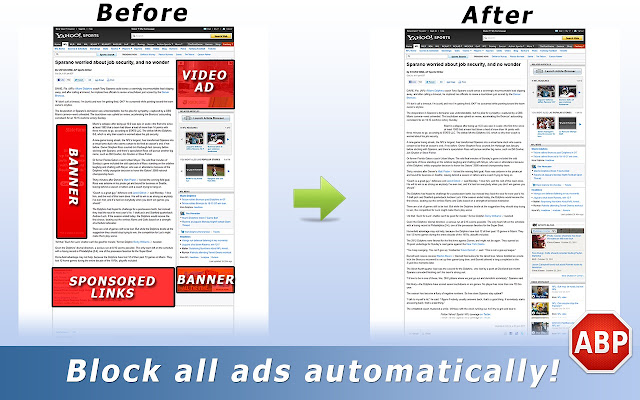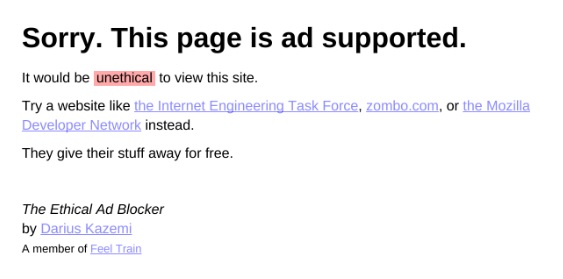“Surf the web without annoying ads!” blasts one well-known website promoting the installation of a browser extension that allows users to prevent ads from popping up on their computer screen. “Easily disable most tracking and browse the web anonymously,” the site copy continues.
With no ads and no tracking, the promise of an uninterrupted online experience seems almost too good to pass up for many consumers. As with anything that seems too good to be true, it really is. The ramifications for both consumers and advertisers profoundly affects not only web browsing, but the whole purpose of the Internet as we know it.
Available since at least 2004, ad blocking software has achieved more prominence with the release of iOS 9, the operating system for Apple’s iPhones and iPads. Until now, ad blocking was mostly used for desktop computer screens. With the rise of mobile usage, ad blocking is now on those devices as well. This means that another front has opened up in the constant battle between advertisers’ need to promote their products and consumers’ need for hassle-free online browsing.
In basic terms, ad blockers filter or alter advertising content on a webpage. By blocking or stripping down this content, users can view websites without embedded videos, banner ads, pop-up windows or even pictures — the types of content that make up the vast majority of advertisements. Aside from blocking intrusive interruptions, the benefits to the user include faster loading of web pages, less use of bandwidth, and improved security from malware.

Source: Android Pipe
“Advertising is totally unnecessary, unless you hope to make money.” – Jef I. Richards
What may be a benefit to users can lead to a substantial, even disastrous, loss of revenue for website owners whose livelihood depends on those blocked ads. This is especially true for affiliate marketers, who rely on commissions for purchases made through their site. Much has been made in recent years of the need for affiliate marketers to provide quality content to online users. But without a revenue stream, many of these affiliates will be forced to shut down. Quality content doesn’t come free, and this is the conundrum facing consumers who use ad blocking software: By impeding the content publisher’s revenue, they, the consumers, risk not only losing the amount of quality content available to them, but the content itself may be limited to only those that can afford and are willing to pay for it.
Just how much money is at stake here?
According to PageFair, a provider of “counter ad block solutions to web publishers,” the use of ad blocking software could cost online publishers almost $22 billion in 2015 based on the estimated 198 million worldwide users of such software. As the number of users of ad blocking software climbs, lost revenue to the online advertising industry will also increase, and this will have far reaching and lasting effects on affiliate marketing.
There is a valid point to be made, however, that many of the reasons consumers are flocking to ad blocking software can be traced back to those in the online advertising industry that have “ruined it for the rest of us.” So says Michael Rogers of Affiliate Marketer Training. “Ads have become such an annoyance around the web that people are simply fed up with it. The browsing public is deciding en-mass that they won’t stand for it anymore. They are no longer willing to put up with free content in exchange for advertising.” Rogers goes on to advise affiliate marketers to diversify and not “rely solely on one form of revenue.”

But what it means to diversify and create additional revenue streams for affiliate marketers will depend on several factors, not the least of which is what is being used as the base revenue model.
An affiliate site full of banner ads may be affected far more than a blog with mainly text links. A site that captures customer data such as an email address (e.g., for a newsletter sign up) for remarketing efforts can better afford to lose revenue from blocked ads. After all, they can make up the difference by promotions sent via email. Sites that offer value to their users (i.e. quality content) through an online blog or newsletter, for example, will still continue to attract quality traffic and thrive.
Diversifying is solid advice for investing and affiliate marketing. The larger lesson here is to accept the rise of ad blocking software and its challenges, much like one of Google’s algorithm updates (remember Panda?). What may have been seen as a death knell to some gave rise to much needed improvements to online searches. These improvements in turn created higher quality experiences. Although the fear of potential ruin because of blocked ads and restricted revenue is real, affiliate marketers should not lose sight of best practices for SEO and PPC campaigns which still govern how ads and sites are ranked in search engines.
Ad blockers are not going away any time soon, and their full effect on the industry remains to be seen. There may be court challenges as to the legality of their use. Some in the industry are trying to frame the issue in ethical terms, likening the use of ad blockers similar to music and software piracy. As a response to their use, some site owners are preventing users from accessing content unless the software is disabled or their site white-listed, allowing at least some ads to be shown. Others are moving towards a subscription model to access content.

Keystone
However things shake out in the end — ads becoming less intrusive (or more ingeniously placed), users paying to access content, or some sort of détente reached between advertisers and ad blocker software publishers — affiliates must choose to meet this latest challenge or risk being blocked from their future.
Has ad blocking impacted your affiliate marketing revenue? Tell us how you are overcoming this challenge in the comment section below.
John Hernandez is an Affiliate Marketing Manager at cleverbridge.
I run a website, and I have a couple solutions for this issue. The biggest solution that I use, is that I don’t use ad networks. Ad networks when they first popped up, monetized sites. These days, 1000 impressions might earn you a couple cents. Then it was a few dollars for 1000 impressions. Second I do advertising, but I directly host the images. The only way to get rid of the ads, is to manually block them. I also use a link cloaking software, which again makes it harder for the ad blocking to “see” that these are ads, rather then just my own site liking within. Last, I have been using a subscription model for years now. I hide the “good stuff” for members only. The rest of it, is free but driven by affiliate banners, which aren’t blockable.
Really, the bad guys are the Ad sales teams, who pocket most of the profits, which in turn has lead website owners to find more invasive ways to get ads to the consumer. Hell, I use ad blocking software, uBlock Origin and Ghostery, both. Way too many ads on some of those sites (but I do unblock those whom I cannot support otherwise, and deserve the ad revenue for providing a good service).
Thanks so much for the comment. Your strategy for managing ad blocking technology sounds quite innovative. When you adopted the banner ad strategy, did you see a major change in your advertising revenue?
I feel like viewing ads is part of the deal if users want content to be free. The use of ad blocking software breaks that implicit contract. What’s more is that the vast majority of visitors who use ad blockers aren’t interested in making even a small payment in exchange for an advertising free site.
Hi Jonathan, and thanks so much for commenting.
Your sentiment is certainly echoed by many in the industry. You can see in this analysis of one UK site, they are blocking users from accessing content if they detect ad blocking software. We note this issue and more in our recent Ecommerce Digest.